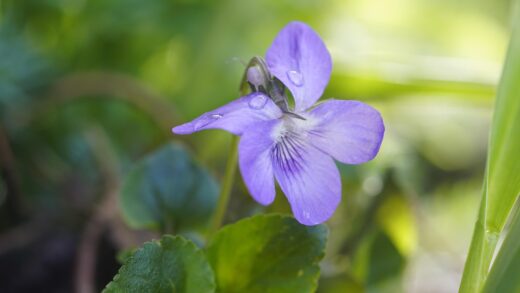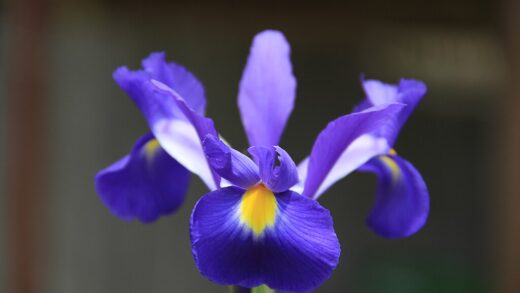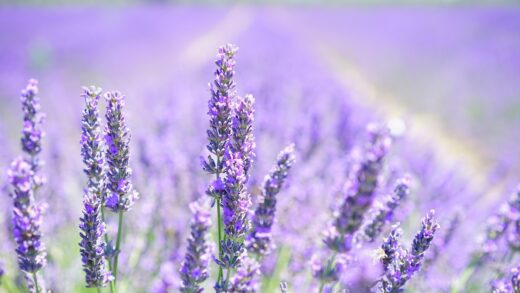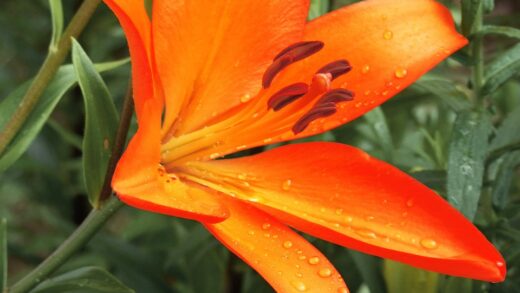While Hypericum androsaemum is generally regarded as a robust and relatively trouble-free shrub, it is not entirely immune to the challenges posed by various diseases and pests. A vigilant gardener who is able to recognize the early signs of a problem is in the best position to manage it effectively, preventing minor issues from escalating into major health crises for the plant. Understanding the common culprits, from fungal infections to sap-sucking insects, and being familiar with both preventative strategies and appropriate treatments are essential components of responsible plant husbandry. A proactive approach focused on creating a healthy growing environment is the most powerful tool in keeping this beautiful shrub free from significant harm.
The overall health of the plant is its primary line of defense against both diseases and pests. A plant that is stressed due to poor growing conditions, such as waterlogging, drought, nutrient deficiency, or improper light exposure, is far more susceptible to attack. Pests are often drawn to weakened plants, and fungal spores find it easier to take hold on tissues that are already compromised. Therefore, the foundational principles of good care—proper siting, well-drained soil, appropriate watering, and balanced nutrition—are also the most effective preventative measures against health problems.
Good garden hygiene plays a surprisingly significant role in disease and pest management. This includes simple practices like regularly clearing away fallen leaves and other debris from around the base of the plant. This material can harbor fungal spores and provide a hiding place for overwintering pests. It is also important to properly dispose of any pruned material that shows signs of disease, rather than adding it to the compost pile where the pathogens could survive and spread. Keeping gardening tools clean, especially pruning shears, can also prevent the transmission of diseases from one plant to another.
Regular inspection of the plant is a critical habit to cultivate. Taking the time to look closely at the leaves (both upper and lower surfaces), stems, and flowers can lead to the early detection of a problem. Noticing the first few aphids, the initial tell-tale pustules of rust, or the fine webbing of spider mites allows for intervention when the pest population is small or the disease is localized. This makes control much easier and more effective, often allowing for the use of simpler, less invasive treatment methods.
Common fungal diseases
One of the most frequently encountered diseases affecting Hypericum androsaemum is rust. This fungal disease is easily identified by the appearance of small, raised pustules on the undersides of the leaves, which are typically bright orange or reddish-brown in color. The upper surfaces of the leaves may develop corresponding yellow or pale green spots. In severe infections, the pustules can cover the leaves, causing them to wither, die, and drop prematurely, which can significantly weaken the plant over time.
More articles on this topic
Rust fungi thrive in conditions of high humidity and moderate temperatures, making them particularly problematic during damp spring and autumn weather. Poor air circulation around the plant creates a stagnant, humid microclimate that is ideal for the spores to germinate and infect the leaves. The spores are easily spread by wind and water splash, allowing the disease to move through a planting or from a neighboring infected plant. Preventing rust is therefore heavily reliant on providing good spacing between plants and avoiding overhead watering that wets the foliage.
If a rust infection is detected, the first step should be to remove and destroy all the affected leaves to reduce the source of spores. For minor infections, this may be enough to bring the problem under control. It is also crucial to clear away any fallen leaves from the ground beneath the plant, as the fungus can overwinter on this debris. Improving air circulation by selectively pruning some of the inner branches can also help to create a less favorable environment for the fungus.
For more persistent or severe rust infections, the use of a fungicide may be necessary. There are both organic and synthetic fungicides available that are effective against rust. It is important to choose a product that is labeled for use on ornamental shrubs and to follow the application instructions carefully. Fungicides are generally most effective when applied as a preventative measure or at the very first sign of disease, as they can protect healthy foliage from becoming infected but may not cure already heavily diseased leaves.
Identifying and treating leaf spot
Leaf spot is another common fungal issue that can affect the foliage of Hypericum androsaemum, causing cosmetic damage and, in severe cases, some defoliation. This disease manifests as distinct spots or blotches on the leaves, which can vary in color from brown to black and may sometimes have a darker border or a purplish halo. As the disease progresses, the center of the spots may dry out and fall away, giving the leaf a “shot-hole” appearance. While rarely fatal to the plant, a heavy infestation can reduce its vigor and aesthetic appeal.
More articles on this topic
Similar to rust, leaf spot fungi flourish in damp, humid conditions. The spores are typically spread by splashing water from rain or irrigation, which carries them from infected debris on the ground or from lower leaves to the healthy foliage above. The disease often takes hold during prolonged periods of wet weather in the spring and summer. Therefore, preventative measures are centered on minimizing leaf wetness and improving the overall garden environment.
Management of leaf spot begins with the same principles of good sanitation used for other fungal diseases. Promptly remove and dispose of any leaves that show signs of infection to prevent the further spread of spores. In the autumn, a thorough cleanup of all fallen leaves is particularly important to reduce the amount of fungal inoculum that can survive the winter and cause new infections the following spring. Pruning to open up the structure of the shrub will improve air movement, helping the leaves to dry more quickly after rain.
If leaf spot becomes a recurring and significant problem, chemical control may be considered. A fungicide containing copper or chlorothalonil can be effective, but it should be applied early in the season as new leaves are emerging to protect them from initial infection. It is important to remember that these treatments are preventative and will not cure existing spots. For most garden situations, however, managing leaf spot through cultural practices like sanitation and proper watering is a more sustainable and environmentally friendly approach.
Key insect pests to watch for
While generally resilient, Hypericum androsaemum can occasionally be troubled by sap-sucking insects, with aphids being one of the most common culprits. These small, pear-shaped insects typically congregate in colonies on the soft, new growth and the undersides of leaves. They feed by piercing the plant tissues and sucking out the nutrient-rich sap. A heavy infestation can cause the new growth to become distorted, curled, and stunted. Aphids also excrete a sticky substance called honeydew, which can lead to the growth of sooty mold on the leaves.
Spider mites are another potential pest, particularly in hot, dry conditions. These are not true insects but are tiny arachnids that are difficult to see with the naked eye. Their presence is often first indicated by a fine, stippled or speckled pattern on the leaves as they suck the contents out of individual plant cells. In more advanced infestations, fine webbing may be visible on the undersides of the leaves and between the stems. Infested leaves may turn yellow or bronze before drying up and dropping off.
Scale insects are more subtle pests that can sometimes affect the woody stems of the shrub. These insects form a hard, waxy shell over their bodies, appearing as small, stationary bumps on the bark. Like aphids, they feed on the plant’s sap, and a large population can gradually weaken the plant over time. They also produce honeydew, which can attract ants and lead to sooty mold. Their hard, protective covering makes them more difficult to control with contact insecticides.
Managing these pests effectively often starts with the least toxic methods. A strong jet of water from a hose can be surprisingly effective at dislodging aphids and spider mites from the plant. For more persistent infestations, insecticidal soaps or horticultural oils can be used. These products work by smothering the soft-bodied insects and are generally less harmful to beneficial insects than broad-spectrum chemical pesticides. For scale insects, a horticultural oil applied during the dormant season can be particularly effective at suffocating the overwintering pests.
Integrated pest management strategies
Integrated Pest Management (IPM) is a holistic and sustainable approach to dealing with garden pests that prioritizes long-term prevention over chemical intervention. The core principle of IPM is to create a healthy and balanced garden ecosystem where pest populations are kept in check naturally. This involves combining several different strategies, including cultural, biological, and, only as a last resort, chemical controls. For Hypericum androsaemum, this means starting with the selection of a healthy plant and placing it in a location with suitable growing conditions.
A key component of IPM is encouraging the presence of natural predators and beneficial insects in the garden. Ladybugs, lacewings, and hoverflies are voracious predators of aphids, and their larvae can consume hundreds of them. Predatory mites can help to control spider mite populations. Planting a diverse range of flowering plants, particularly those with small, open flowers like dill, fennel, and alyssum, can provide nectar and pollen that will attract and sustain these beneficial insects, creating a natural pest control service right in the garden.
Regular monitoring is the cornerstone of any successful IPM program. By frequently inspecting the plants for the first signs of trouble, a gardener can intervene early with simple, mechanical controls. This might involve hand-picking larger pests, pruning off a localized infestation of aphids, or using a strong spray of water to knock pests off the plant. These simple actions can often prevent a pest population from reaching a level where more drastic measures are needed.
When pest populations do exceed an acceptable threshold, IPM dictates that the least toxic control methods should be used first. This could involve the application of insecticidal soap or neem oil, which have a lower impact on the environment and on beneficial organisms compared to broad-spectrum synthetic pesticides. Chemical pesticides are considered a last resort, to be used only when other methods have failed and the health of the plant is seriously threatened. This thoughtful, multi-faceted approach minimizes environmental impact while effectively managing pest problems.


















